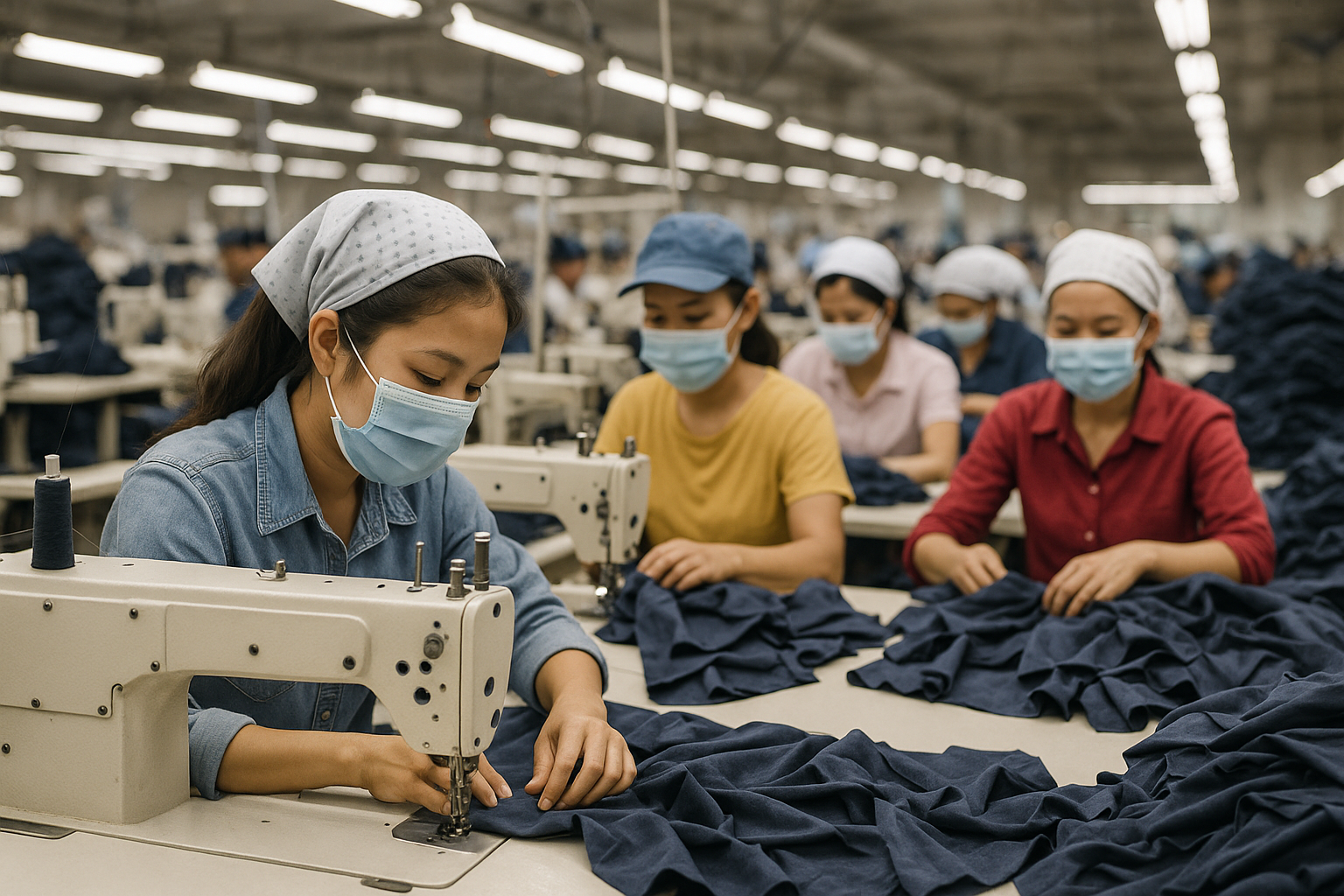
In recent weeks, garment factories in Guangzhou, China, particularly in the so-called "Shein villages" of Panyu District, have experienced a significant slowdown, with many workshops sitting idle. These factories, which have been the backbone of Shein's ultra-fast fashion empire, are facing reduced orders as the company navigates new economic pressures, including changes in global trade policies and supply chain diversification efforts. This shift marks a pivotal moment for Shein, a Chinese-founded retailer known for its low-cost clothing and rapid production model, as well as for the thousands of workers and factory owners who depend on its orders.
The Rise of Shein's Manufacturing Hub
Shein's success has been fueled by its highly efficient supply chain, centered in Guangzhou, where approximately 7,000 suppliers produce garments at breakneck speed. The "Shein villages" — urban neighborhoods like Dashi, Tangbu, and Yuangang — are home to thousands of small workshops and factories that churn out trendy clothing in small batches, often within days of an order being placed. This "on-demand" model, powered by AI-driven trend analysis and real-time customer data, allows Shein to minimize inventory waste and offer prices as low as £6 for sweaters or £10 for dresses.
The region's competitive advantage lies in its complete supply chain, sourcing everything from fabric to zippers locally, unlike rivals in Vietnam or Bangladesh that rely on imported materials. For years, this ecosystem has thrived, with factories buzzing to meet Shein's massive demand, reportedly generating over $30 billion in revenue in 2023. However, recent developments have disrupted this once-vibrant hub.
Why Factories Are Going Idle
The idling of Shein's garment factories stems from a combination of external trade pressures and strategic shifts within the company. A key factor is the United States' decision to end the "de minimis" exemption, a trade rule that allowed low-value imports, such as Shein's small packages, to enter the U.S. duty-free. With new tariff rates as high as 145% imposed on Chinese goods, Shein faces increased costs that threaten its low-price model.
To mitigate these costs, Shein has begun diversifying its supply chain, incentivizing its largest suppliers to relocate production to Vietnam, where labor is cheaper and trade barriers with the U.S. are less restrictive. Factory owners in Guangzhou report that Shein has offered minimum order guarantees and longer lead times to suppliers willing to move. Smaller factories, like that of Mr. Hu, who employs about 100 workers and produces 200,000–300,000 pieces monthly for Shein, are often too small to be included in these relocation plans, leaving them with dwindling orders.
Social media posts reflect the sentiment in Guangzhou, with users noting that Shein suppliers are "closing all over the place" due to these shifts. One post highlighted the broader impact on Chinese workers caught in the crosshairs of U.S.-China trade tensions. Another emphasized the scale of the supply chain shift, with Shein pushing suppliers toward Vietnam. While these posts are not definitive evidence, they align with reports from factory owners who describe a "glum" mood in Panyu, with local orders declining sharply since early 2025.
Impact on Workers and Factory Owners
The slowdown has significant implications for the workers and factory owners who have powered Shein's growth. Guangzhou's garment factories employ thousands of migrant workers from across China, many of whom work 12-hour shifts, six or seven days a week, to produce clothing. These workers, often highly skilled in cutting, stitching, and finishing garments, rely on Shein's fast payment cycles and steady orders for their livelihoods. However, the informal nature of their employment — with no long-term contracts or access to local welfare systems — leaves them vulnerable to sudden disruptions.
Factory owners, too, face challenges. The low profit margins on Shein's orders, combined with the company's hard-bargaining tactics, have always been a point of contention. Now, with orders drying up, many are struggling to maintain operations. For some, relocating to Vietnam is not feasible due to the high capital investment and concerns about less productive labor compared to China. As one factory owner, Mr. Li, noted, the move abroad could disrupt the efficiencies that made Shein's model successful in the first place.
Shein's Response and Future Outlook
Shein has denied claims that it is significantly shifting its supply chain away from China, pointing to an increase in its Chinese suppliers from 5,800 to 7,000 in the past year. The company also continues to invest in China, including a $500 million supply chain hub in Guangzhou's Zengcheng District. However, these investments may not immediately alleviate the pressures on smaller factories in Panyu, where the decline in local orders is already being felt.
The company's long-term strategy appears to hinge on balancing cost increases with its commitment to ultra-low prices. By increasing inventory storage in U.S. warehouses and shifting some shipping to cargo ships, which are more carbon-efficient than planes, Shein aims to reduce costs and maintain quick delivery times. Yet, as supply chain expert Alison Layfield noted, moving production abroad could slow turnaround times and raise costs, potentially forcing Shein to pass these expenses onto consumers — a move that could dampen demand.
Broader Implications
The idling of Shein's factories in Guangzhou underscores the fragility of the fast-fashion model in the face of geopolitical and economic shifts. For years, Shein has faced criticism for its environmental impact, with 16.7 million metric tons of carbon dioxide emitted in 2023, and for labor practices, with reports of 75-hour workweeks and wages below living standards. While the company has pledged improvements, including $15 million to upgrade factories and stricter supplier codes, recent investigations suggest that excessive working hours remain common.
As Shein navigates these challenges, the slowdown in Guangzhou raises questions about the sustainability of its business model and the future of the workers and factories that have driven its meteoric rise. For now, the once-bustling Shein villages are quieter, with workshops shuttered and workers facing an uncertain future. Whether Shein can adapt without sacrificing its core appeal — cheap, trendy clothing delivered quickly — remains to be seen.






